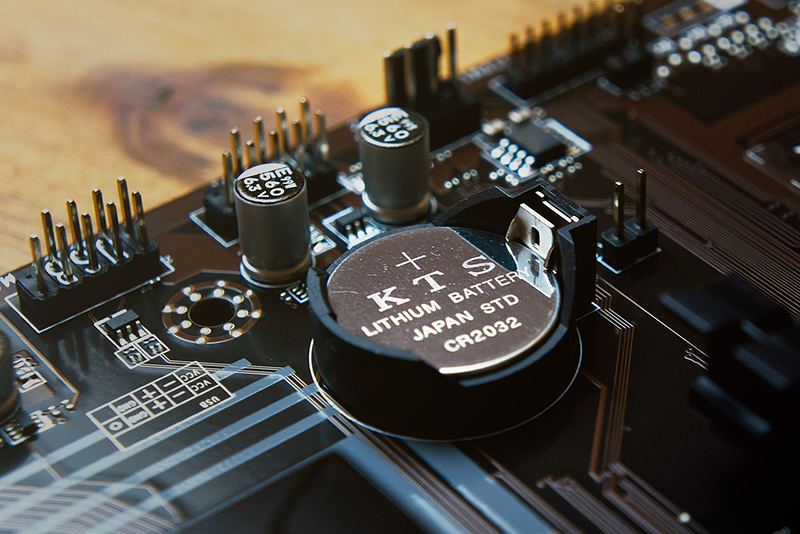The World Runs on Batteries
Lithium batteries power everything – including cell phones, laptops, toys, appliances, power tools, and electric toothbrushes. High-tech devices usually contain rechargeable lithium-ion batteries because it is much more convenient to charge a device than it is to frequently dismantle it and replace a standard alkaline disposable battery (commonly used in basic devices like tv remotes or flashlights). Lithium-ion batteries last much longer and have higher power density than traditional batteries.
What’s in a Lithium Battery?
Lithium batteries are composed of various elements, including lithium-ion or lithium-polymer cells, a protective casing, electrolytes, and valuable metals like cobalt, nickel, and copper. Despite being rechargeable, they will eventually require replacement due to a loss of capacity. You should NOT dispose of them in regular trash or recycling bins, because they contain harmful substances that could be hazardous to the environment if released.
Types of Lithium Batteries
There are several different types of lithium batteries, each with its own unique composition and applications.
Lithium Cobalt Oxide (LiCoO2 or LCO)
This is the most common type of lithium-ion battery and is used in many consumer electronics like laptops, smartphones, and digital cameras. They offer high energy density, providing long-lasting power.
Lithium Iron Phosphate (LiFePO4 or LFP)
These batteries are known for their excellent thermal stability and safety characteristics, which is why they are used in devices like electric vehicles, electric bikes, and storage systems for renewable energy. LiFePO4 batteries have a longer cycle life and can withstand high charge and discharge rates.
Lithium Manganese Oxide (LiMn2O4 or LMO)
LMO batteries are commonly found in power tools, medical devices, and electric bikes. They can deliver high currents and have a relatively long cycle life.
Lithium Nickel Manganese Cobalt Oxide (LiNiMnCoO2 or NMC)
NMC batteries are a popular choice for electric vehicles and energy storage applications. They offer a good balance between high energy density and power output.
Lithium Nickel Cobalt Aluminum Oxide (LiNiCoAlO2 or NCA)
NCA batteries are also used in electric vehicles, and have similar advantages to NMC batteries.
Lithium Titanate (Li4Ti5O12 or LTO)
LTO batteries are known for their extremely fast charge and discharge rates, which makes them helpful for quick-charging electric buses and energy storage systems. They have a long cycle life and great thermal stability.
Why is it Important to Recycle Lithium Batteries?
Recycling is critical for conservation of natural resources, minimizing waste, and preventing pollution. By reusing materials from recycled products like valuable metals and minerals, we reduce the need for extracting and processing virgin resources from the earth. This helps conserve natural habitats and minimizes the impact of resource extraction on ecosystems. Recycling lithium batteries also diverts waste from landfills, reducing the rapidly growing need for new landfill sites and keeping harmful substances from entering the environment.
How Does It Work?
The process of recycling lithium batteries involves several steps to carefully ensure the proper recovery of materials. First, batteries must be separated from regular waste streams. After collection, batteries are sorted based on their types to facilitate efficient processing. The batteries are then dismantled to access the cells inside. Battery cells are the basic building block of a battery that generates electrical energy through chemical reactions. Shredding, sieving, and magnetic separation is then done to sort metallic components from the battery cells. These components undergo further processing to extract valuable metals. Remaining components, including plastics, are then disposed of responsibly.
Dangers of Improper Lithium Battery Disposal
Lithium batteries contain a sheet that separates electrodes and prevents short-circuiting. If a battery is crushed or punctured in any way, the separator could be breached causing a thermal reaction – leading to a spark or fire. If the compromised battery is near any flammable material or there are a bunch of batteries together (say in a landfill or a recycling center) it could be a recipe for disaster. In recent years, there have been many lithium ion battery fires due to malfunction or improper handling.
Lithium is highly reactive: temperature, charging voltage, and casing damage can cause a thermal reaction. That’s why airline passengers are recommended to keep laptops and cell phones in their carry-on bags, and prohibited from checking spare lithium batteries and e-cigarettes in luggage. Proper handling is ALWAYS required to prevent fire and pollution risk while recycling lithium batteries.
Electronics Recycling at METech
We offer end-to-end IT Asset Disposition and Data Security services for government, healthcare, and technology clients across the United States. We are continuously improving our processes and implementing the latest technologies to provide the safest and most sustainable ITAD in the world. Contact an expert at METech to learn how we can design a customized solution for your organization today.


